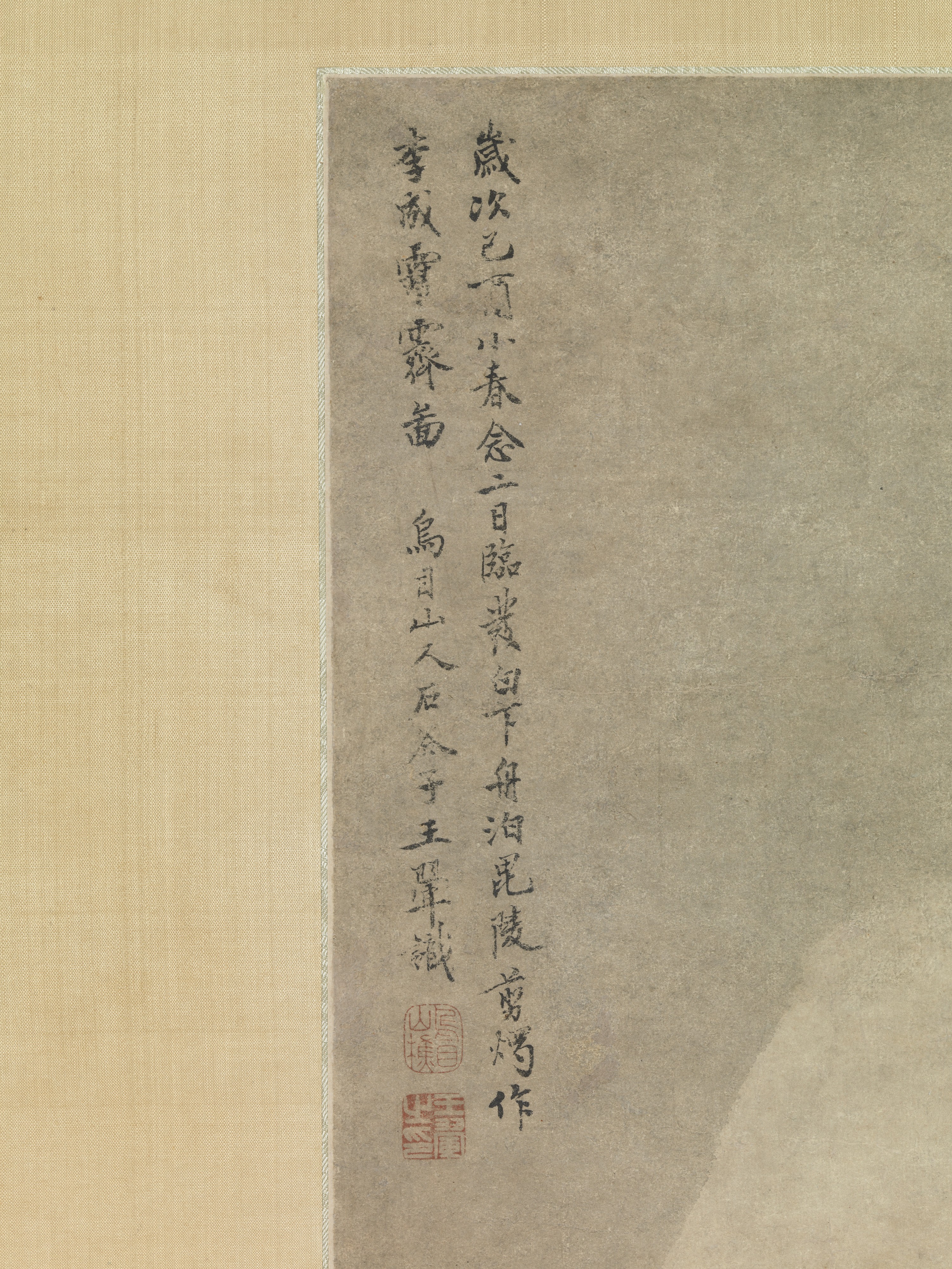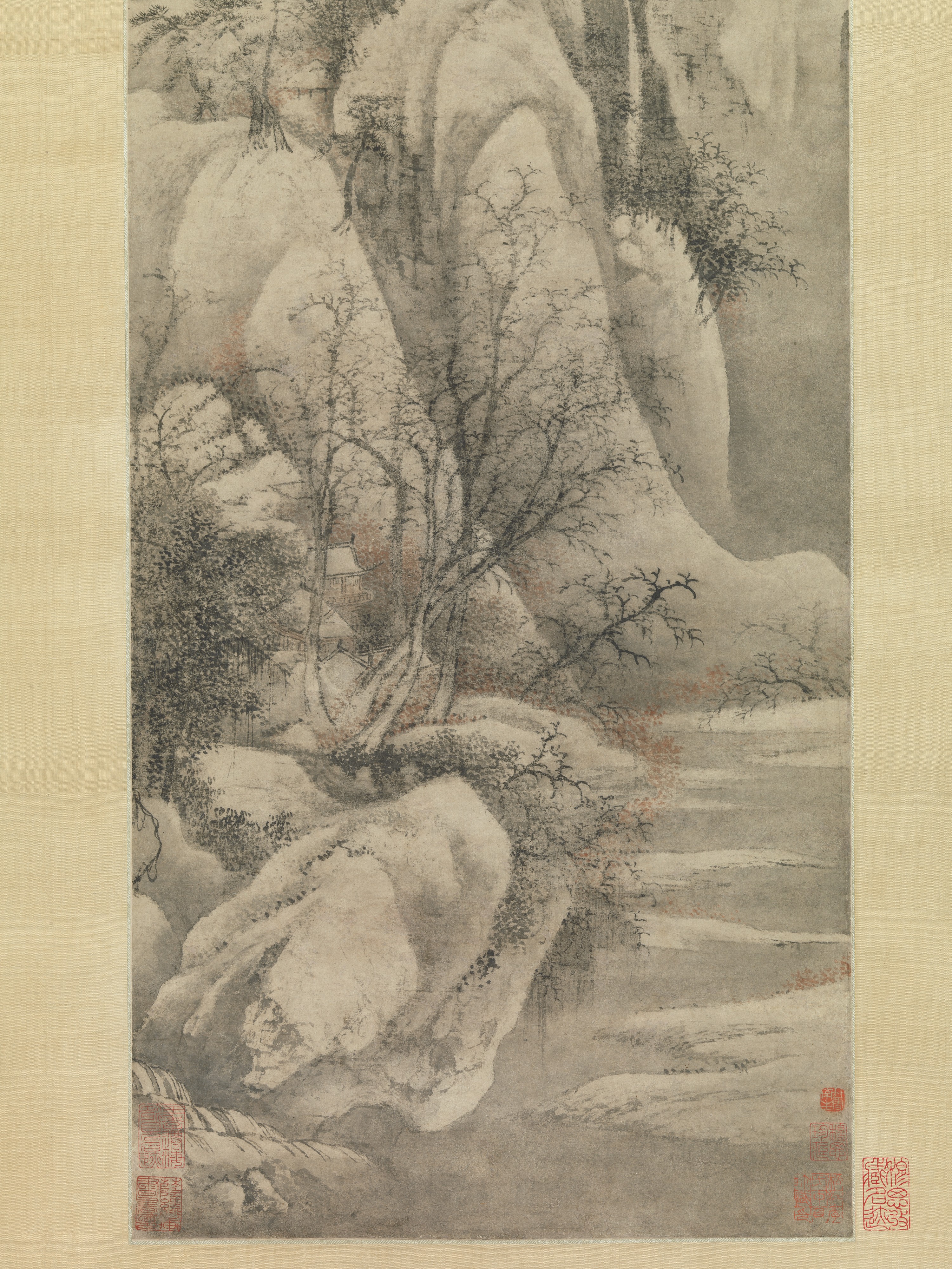Snow Clearing: Landscape after Li Cheng
Wang Hui Chinese
Inscribed by Wang Hui Chinese
Not on view
Defying the dictum of the authoritative theorist Dong Qichang (1555–1636) that "in painting it is better to be descriptively obscure rather than to be obvious," Wang Hui regarded calligraphic abstraction and mimetic representation as "the two wings of a bird." Inspired by Li Cheng's (919–967) descriptive idiom of jagged rock formations and spiky "crab-claw" wintry trees, which demand representational skill as well as calligraphic discipline, Wang's perfectly controlled lyrical composition—a snowscape of enchanted stillness-celebrates the beauty of nature.
Painted for Zhou Lianggong (1612–1672), a high-ranking official who was facing unjust charges of corruption, Wang's choice of the Li Cheng style was significant. Li's winter landscapes had long been viewed as emblems of survival in the face of adversity, so Wang's painting may be read as an expression of sympathy and encouragement.
#7693. Snow Clearing: Landscape after Li Cheng
Due to rights restrictions, this image cannot be enlarged, viewed at full screen, or downloaded.
This artwork is meant to be viewed from right to left. Scroll left to view more.




